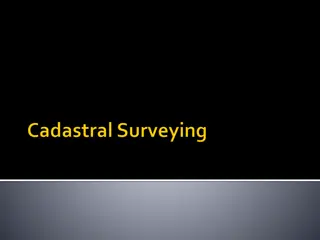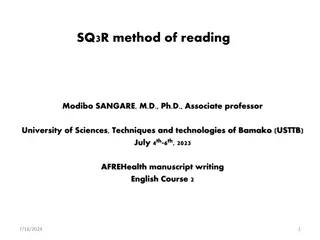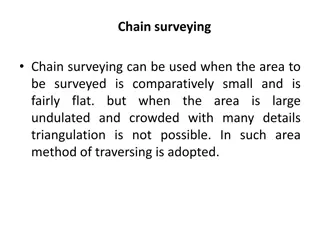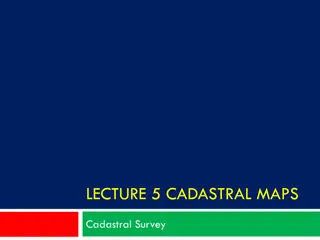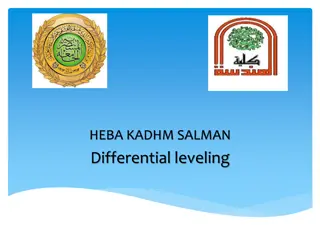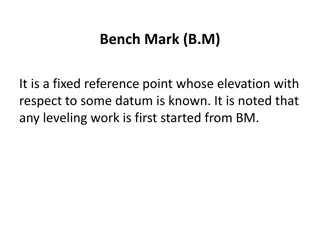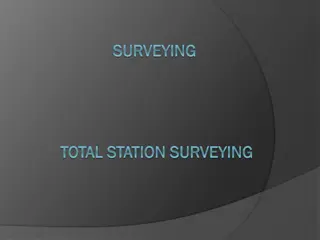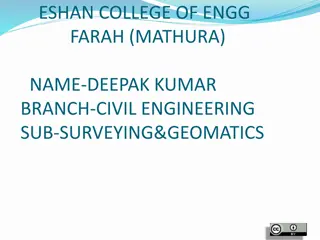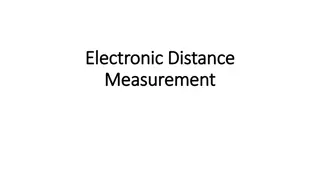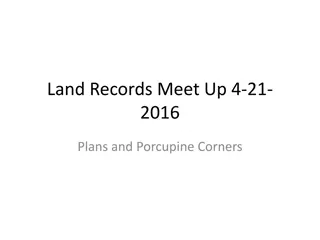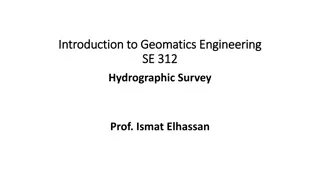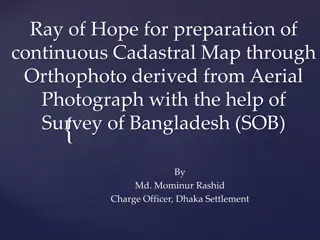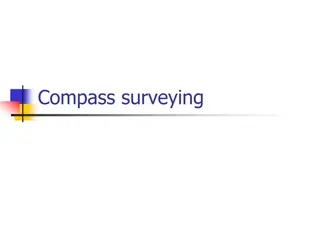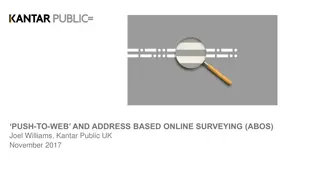Understanding Cadastre and Cadastral Surveying
Cadastre is a system containing land information, while cadastral surveying involves defining property boundaries and land ownership rights. Cadastral surveys subdivide land parcels for ownership and document property ownership with geometric descriptions. Real property ownership denotes the authority to control an area through designated rights. The transfer of property rights is recorded in documents known as titles.
Download Presentation

Please find below an Image/Link to download the presentation.
The content on the website is provided AS IS for your information and personal use only. It may not be sold, licensed, or shared on other websites without obtaining consent from the author. Download presentation by click this link. If you encounter any issues during the download, it is possible that the publisher has removed the file from their server.
E N D
Presentation Transcript
cadastre is normally a parcel based, and up- to-date land information system containing a record of interests in land (e.g. rights, restrictions and responsibilities). A cadastre, historically, has meant a record of land parcels, similar in meaning to tax maps.
Cadastral surveying is the discipline of land surveying that relates to the laws of land ownership and the definition of property boundaries. It involves interpreting and advising on boundary locations, on the status of land ownership and on the rights, restrictions and interests in property, as well as the recording of such information for use on plans, maps, etc. It also involves the physical delineation of property boundaries and determination of dimensions, areas and certain rights associated with properties, whether they are on land, water or defined by natural or artificial features.
Cadastral surveys are generally performed to subdivide land into parcels for ownership under a land title and to re-establish boundaries of previously surveyed properties to determine the physical extent of ownership or to facilitate the transfer of the property title. Cadastral surveys are used to document land ownership, by the production of documents, diagrams, sketches, plans, charts, and maps.
A geometric description of land parcels linked to other records describing the nature of the interests the ownership or control of those interests and often the value of the parcel and its improvements.
Real property ownership is not the ownership of land; it is the designation as the authority to control an area. It is the ownership of rights. The right to build upon, improve, inhabit, cultivate, deny access to others, and countless other rights are what is owned.
The collection of papers, recordings, and other documents that describe a transfer of the titled rights to a real property parcel are often referred to as the title.
A deed is the written instrument that describes the assignment of the rights that are owned and the geographical limits of that assignment. A deed is not the same as a title, although the words are often used interchangeably. Although the limits of the rights of real property ownership are invisible, they must be identifiable. Every deed must communicate what rights are owned and where the boundaries or limits of those rights are. It is folly to attempt to transfer rights in real property without adequately identifying and communicating the location of the limits of the rights conveyed.
East North Corners: Instead of defining the boundaries of the parcel by marking each step of a walking man, the end points of each side could be marked and the boundary could be defined as a straight land line between the end land points or corners.
primary function (e.g. supporting taxation, conveyancing, land distribution, or multipurpose land management activities); the types of rights recorded (e.g. private ownership, use rights, mineral leases); the degree of state responsibility in ensuring the accuracy and reliability of the data (e.g. complete state mandate, shared public and private responsibility); location and jurisdiction (e.g. urban and rural Cadastres; centralised and decentralised Cadastres); the many ways in which information about the parcels is collected ( e.g. ground surveys tied to geodetic control, uncoordinated ground surveys and measurements, aerial photography, digitizing existing historical records, etc.)
a) Fiscal cadastre a) Fiscal cadastre It records information for the purpose of property valuation and land taxation. Here, the basic information needed is location and value of the parcel. In this regard, there must be some sort of agreed upon valuation method that help determine the value of a parcel.
b) Legal cadastre It is a register aiming at identifying the legal owner and exact boundaries of the parcel. To establish legal cadastre it requires delineation of boundaries of the given parcel through surveying and mapping and thereby provision of legal rights. In this respect, legal cadastre is helpful in: 1. Defining property rights; 2. Describing the extent of property rights; 3. Supporting land transfer; and 4. Providing evidence of ownership. b) Legal cadastre
c) Multi It is a relatively new approach of land information system introduced after the Second World War. This land register system incorporates all the necessary information, at one source, which among others are cadastre, land use, buildings, infrastructures of under ground and overhead constructions, soil and other aspects of the given parcel. In many respects, multi-purpose cadastre seems to be an important type of land information system for it provides multitudes of information related to a given parcel. c) Multi- -purpose cadastre purpose cadastre which is reported to have been information related to legal and fiscal
Facilitating efficient and safe land transaction; Providing security and protection Minimizing disputes and litigations of land Serving as a tool for assessing and taxing land Providing the necessary information for planning purposes Managing environmental issues; Facilitating the implementation of land reform when necessary. Registering and carrying out inventory of heritages which are found in urban centers; and Registering tourist facilities
By the end of 1907 Menelik II declared the country's first urban land- related proclamation. The French are reported to have initiated cadastral works in Addis Ababa in the 1920s. Ethiopian Mapping Agency (EMA) established in 1954 Since the 1960s the Authority has begun production of large scale maps for town planning. In 1985 the Addis Ababa city administration launched cadastral project with the core objective of registering property for taxation purpose.
Introduction of modern cadastral system in some major regional towns of the country - piloted cadastral projects in four regional capitals namely: Mekelle, Bahirdar, Awassa and Adama. In 1998 in Mekelle, in 1999 Bahirdar and Awassa, and in 2000 in Adama. These projects have been launched with the intention of establishing multi- purpose cadastre that could be updated constantly. By doing so municipalities could be able in establishing up- to-date data -base system which would be instrumental in managing their resources efficiently.
Discuss and report real practice of cadastre system in your town, city or Keble Discuss and report a cadastre system on the period of derg regime and the government on the power now.




